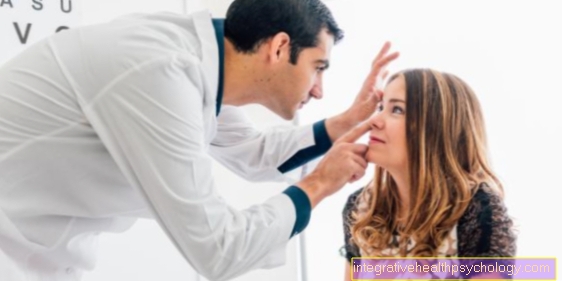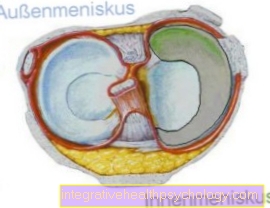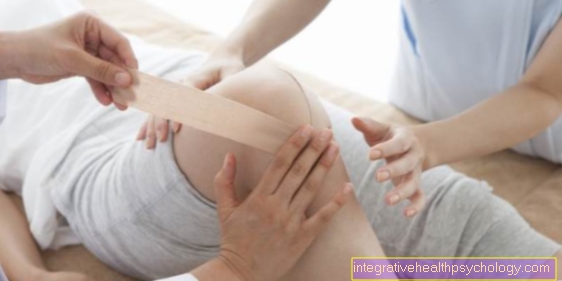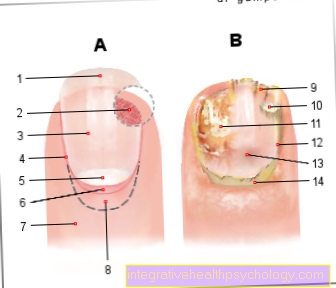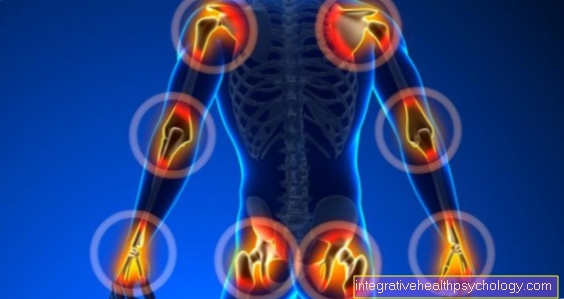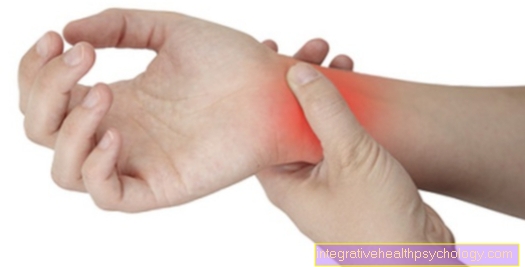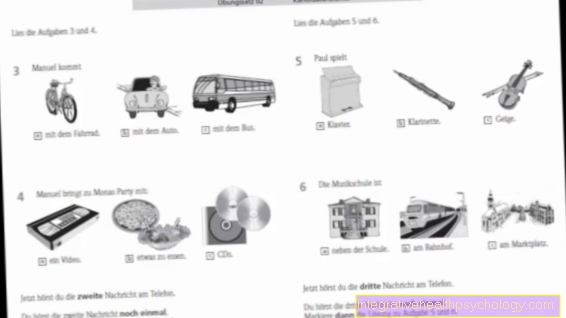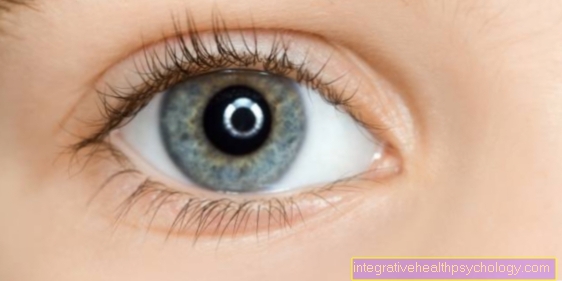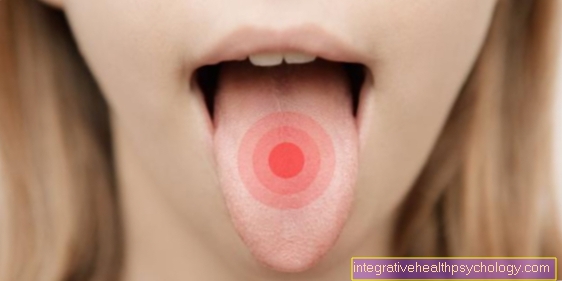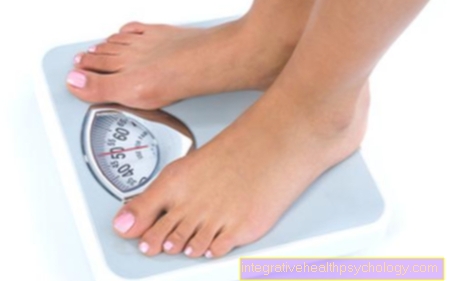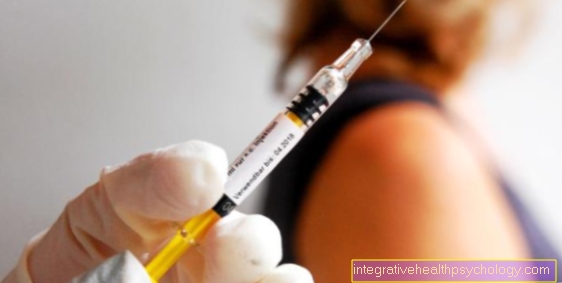U3 investigation
What is the U3?
The U3 is the third preventive medical check-up in childhood, in which the child's level of development is assessed and particular diseases are considered. The examination is also an opportunity for parents to ask questions and receive additional information about caring for their baby. The results are recorded in the yellow booklet that the parents receive from their maternity ward or midwife.
Read more on this topic at: U examinations

When will the U3 take place?
The U3 is carried out in the fourth to fifth week of life. It is possible at the earliest from the third week of life and should be done by the eighth week of life at the latest. The U3 is usually the first contact with the resident pediatrician, since the U1 and U2 are still carried out in the hospital.
Read more on this topic at: Preventive examination of the newborn
Which examinations are carried out?
First, the pediatrician asks the parents if they noticed anything and how the new family member has developed.
The doctor contacts the child and speaks to them. This makes it possible to assess whether the child can fixate faces and hears normally.
A physical examination begins with measuring and weighing the child, as a comparison with children of the same age is already possible here.
The pediatrician will look at the child's skin and eyes and feel the organs and bone points. These include palpation examinations of the liver and spleen, as well as the development of the spine.
In the U3 special attention is paid to the development of the child's hips. For this purpose, an ultrasound is carried out, on which the pediatrician can assess whether the hip position is normal according to age. Not every pediatrician does this part of the examination himself. Some refer the children to an orthopedic surgeon for this.
Read more on this topic at: Hip dislocation in the baby
Another part of the preventive medical check-up is that the pediatrician observes the relationship between the parents and the child.
With the help of some gymnastics exercises, the pediatrician can get an overview of what the child can already do. For example, the doctor only holds the child by the stomach and checks whether the child is turning its head and how it is holding its arms and legs. In the prone position, the child should be able to turn their head to one side.
The examining doctor also tests the child's reflexes. For example, the grasping reflex is checked by the doctor stroking the palm and closing the child's hand. Another reflex at this age is the sucking reflex, which can be triggered by touching the corner of the mouth. This concludes the actual investigation.
Read more on this topic: Reflexes of a baby.
An important part of the U3 is not only the physical examination of the child, but also advising the parents. Various topics are addressed here.
Parents are advised on vaccinations for babies, as the first vaccination appointments can be made between six and eight weeks of age. This is about the vaccinations against:
-Rotavirus
-Tetanus
- Diphtheria
-Whooping cough
-Poliomyelitis
-Hepatitis B
-Hämophilus influenzae and
- Pneumococci
Parents are informed about the vaccinations and the diseases and vaccination is recommended. If requested by the parents, an appointment for the first vaccinations can be made here.
Read more on this topic: Should I have my child vaccinated?
There is also advice on preventing sudden child death, accident prevention and breastfeeding and nutrition. The U3 also includes the third administration of vitamin K to promote blood clotting and the recommendation for the administration of vitamin D and fluoride.
Procedure of the investigation
Preventive examinations usually follow a certain schedule, but this varies slightly from doctor to doctor. In most cases, an examination starts with a conversation in which the pediatrician asks the parents whether they have noticed anything unusual or have other questions.
The pediatrician then contacts the child and first looks for any externally recognizable abnormalities such as the skin or eyes and observes the child's reaction. This is followed by the physical examination with weighing, measuring and palpation of the organs and the skeleton. Some age-appropriate development tests are also carried out and the child's reflexes checked.
Unless the parents request otherwise, the child receives vitamin K.
If the pediatrician carries out the hip ultrasound scan himself, this comes after the other physical examinations.
After the actual examination, there is a consultation on vaccinations, accident prevention and nutrition. The parents have the opportunity to ask further questions and the next appointment is made.
In the event of abnormalities, the further procedure will be discussed and a referral to a specialist will be issued if necessary. Furthermore, the pediatrician points out support offers in the region.
Does my child have to go to U3?
Depending on the federal state, the provisions on preventive medical checkups are different.
In Bavaria, Hesse and Baden-Württemberg, examinations one to nine are mandatory and must also be proven when registering in a kindergarten or school.
In the other federal states, parents receive a written reminder. If no appointment has taken place four weeks later, the pediatrician informs the youth welfare office. This must then check a possible risk to the child's welfare, but cannot insist on the examination.
A stamp card is attached to the yellow examination booklet as proof of the examinations in day-care centers, as only the execution, not the result of the examination, has to be proven.
Who bears the costs of the U3?
The preventive examinations in childhood, to which the U3 belongs, are a compulsory benefit of the health insurance companies. The examination must only be billed privately if the maximum examination age, for U3 the eighth week of life, is exceeded.
Duration of the U3
The actual examination usually takes less than half an hour. The ultrasound examination, if carried out by the pediatrician, extends the examination by a few minutes. The length of the U3 is mainly determined by the advice given by the parents and their questions.
It continues with other investigations. To make you feel prepared for the next U, read about this under: U4 investigation


